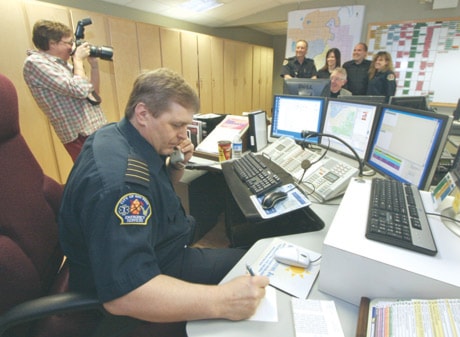Ambulances in Central Alberta will be dispatched by an Edmonton dispatch centre, but what constitutes “Central Alberta” has not yet been announced.
Sheila Rougeau, Alberta Health Services spokesperson, said Alberta Health Services is still working with dispatch centres in Alberta to consolidate dispatch to three centres in Edmonton, Calgary and Peace River.
Out of respect for the centres, further information on how the three provincial dispatch centres will operate will not be released until consolidation is complete, she said.
“When we first started the process, there were 32 dispatch centres. As of (Wednesday), we’re down to 30. So the process has begun but it will take 18 to 24 months before it’s fully consolidated to three,” Rougeau said on Wednesday.
Whether ambulance dispatch boundaries are treated similar to cytology or pap smear testing in Red Deer is unknown. Alberta Health Services may consolidate pap smear tests, possibly sending Red Deer tests south to Calgary and tests north of the city to Edmonton. But AHS says it has not made any decisions and has called for proposals from labs in Alberta.
Under the new provincial ambulance agreement that went into effect on Wednesday, the province now provides funding for ambulances in Alberta. Taking over dispatch is the first step in consolidating ambulance services.
Alberta Health Services has been working with 74 municipalities and organizations that provide ambulance services. Red Deer Emergency Services has contracted with the province to provide ambulance service to the city.
Rougeau said there really wouldn’t be any dispatch boundaries because all three centres will be in touch with one another to co-ordinate ambulance service.
Right now there are multiple dispatch centres that are not talking to each other and miss opportunities to improve service. For example, a rural ambulance taking a patient to a large urban centre could pass empty ambulances on the highway, she said.
“If we have fewer dispatch centres and they’re talking to one another, you have information at a glance of the entire province and as to what the current needs are. It just ensures the fleet is more fully utilized even more so than it is today,” Rougeau said.
“It’s not that dissimilar to the trucking industry or the taxi industry where they have the dispatch and they fully utilize it based on their current location.”
szielinski@www.reddeeradvocate.com
